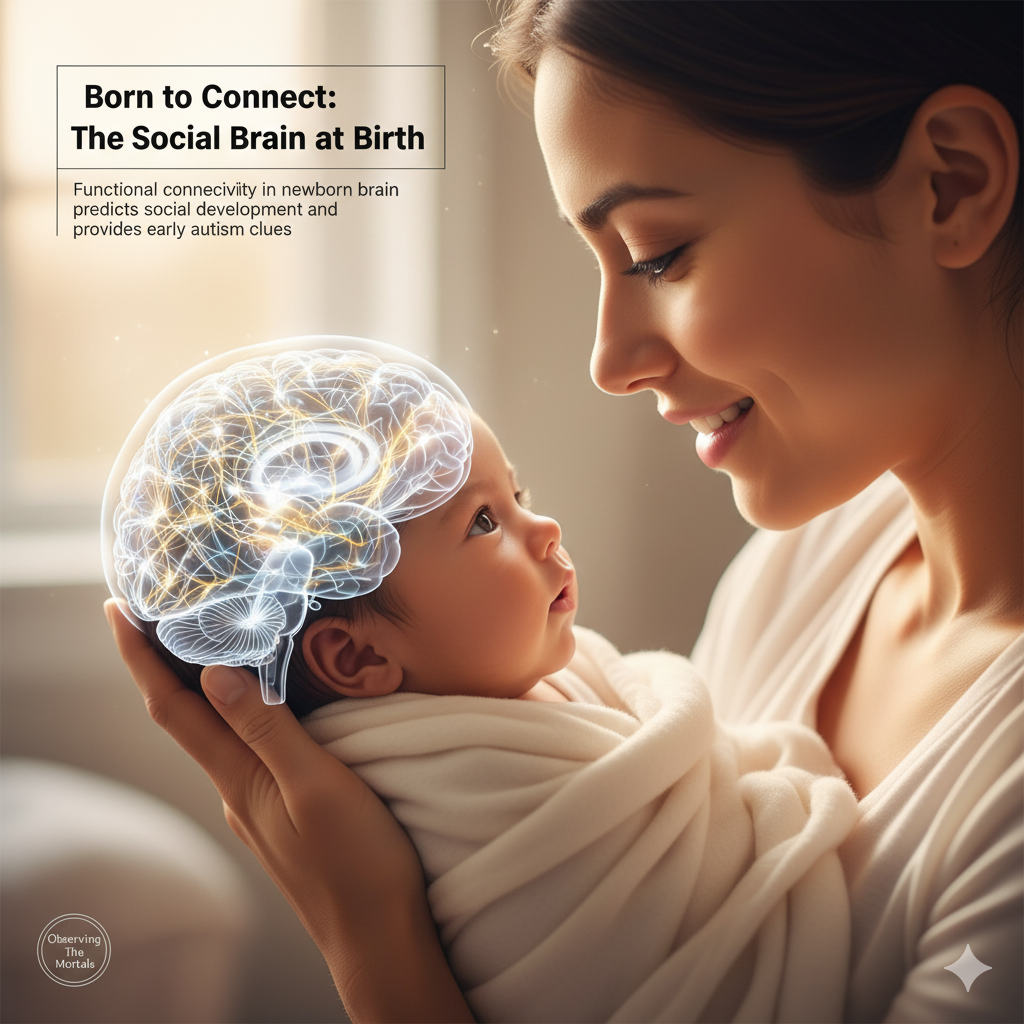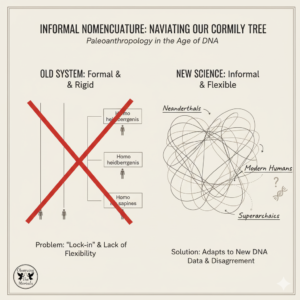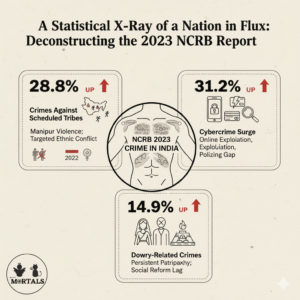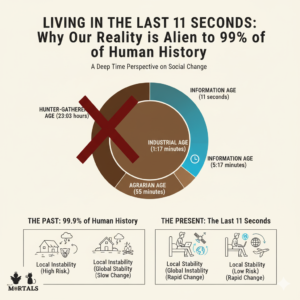When a newborn baby’s eyes lock onto a human face, it feels like a moment of pure, intuitive magic. For a long time, we’ve wondered if this is just a simple reflex or the beginning of something much deeper. A groundbreaking new study from Yale University provides a stunning answer. Using advanced brain imaging, researchers have discovered that a complex, specialized “social network” in a baby’s brain is already firing up within weeks of birth. This case study is a journey into the newborn mind, uncovering the biological foundations of our profoundly social nature and, in the process, finding potential early clues to understanding autism.
The Information Box
Syllabus Connection:
- Paper 1: Chapter 9.6 (Medical Anthropology), Chapter 1.7 (The Biological Basis of Life), Chapter 1.5 (Primate Behaviour: Social Behaviour), Chapter 12 (New perspectives in Anthropology)
Key Concepts/Tags:
- Social Neuroscience, Neuroanthropology, Autism Spectrum Disorder (ASD), Social Perception, Brain Connectivity, Nature vs. Nurture
The Setting: Who, What, Where?
This case study is based on research published in Biological Psychiatry: Global Open Science by an interdisciplinary team at Yale School of Medicine. The scientists used sophisticated functional magnetic resonance imaging (fMRI) data from two major sources: the large-scale Developing Human Connectome Project and a Yale cohort of infants with a family history of autism. Their focus was on the functional connectivity of the social perception pathway—a network of brain regions responsible for processing faces, gaze, and speech—in the brains of newborn infants.
The Core Argument: Why This Study Matters
This research provides a new and profound understanding of the innate, biological foundations of human sociality.
- Our Social Brain is “On” from Day One: The central and most revolutionary finding is that the complex brain network for processing social cues is not something that develops over months of learning. It is already robustly interconnected and active within weeks of birth. This provides a concrete neural basis for the long-observed fact that newborns are innately drawn to human faces over other objects. We are, quite literally, hardwired to be social.
- Early Wiring Predicts Later Social Skills: The study makes a powerful predictive link between this early wiring and later development. The strength of the network’s connectivity at birth was found to be a significant predictor of future social behavior. The research showed that stronger initial brain connectivity led to greater attention to faces at 4 months, which in turn was associated with fewer social difficulties at 18 months.
- A Potential “Pre-Symptomatic” Marker for Autism: This is the major clinical implication of the research. A core feature of Autism Spectrum Disorder (ASD) is reduced attention to social cues like faces. This study identifies a potential early neural marker for these social vulnerabilities. It suggests that the neurological foundations for autism are likely present in the brain’s wiring at birth, long before the behavioral symptoms become apparent. This could open the door for much earlier identification and supportive interventions.
The Anthropologist’s Gaze: A Critical Perspective
- The “Nature” Side of the Nature vs. Nurture Debate: This study is a powerful contribution to the age-old nature vs. nurture debate, providing strong evidence for the “nature” side of the equation. It demonstrates that a significant part of our capacity for, and interest in, social interaction is biologically innate and hardwired, a product of our long evolutionary history as a highly social primate species.
- Neuroanthropology in Action: This is a classic example of the emerging field of neuroanthropology, which seeks to understand the dynamic relationship between the brain and culture. This research helps establish the biological baseline—the innate neural “hardware”—upon which cultural learning, socialization, and language acquisition (the “software”) will then build and shape the developing individual.
- A Caution Against Biological Determinism: A critical anthropological perspective would caution against interpreting these findings as a form of biological determinism. While the study shows a powerful biological predisposition, it does not mean a child’s social future is sealed at birth. The brain is incredibly plastic, and this early wiring will constantly interact with the child’s environment, upbringing, and cultural context. The study identifies a vulnerability or a predisposition, not an unchangeable destiny.
The Exam Angle: How to Use This in Your Mains Answer
- Types of Questions Where It can be Used:
- “Discuss the biological basis of human social behavior.”
- “The nature vs. nurture debate is central to anthropology. Critically evaluate with examples.”
- “What is the scope of Medical Anthropology in understanding developmental disorders like autism?”
- Model Integration:
- On the Biological Basis of Behavior: “Recent studies in social neuroscience are providing a concrete biological basis for human sociality. For example, a 2025 Yale study used fMRI on newborns to demonstrate that the brain’s ‘social perception network’ for processing faces and gaze is already active at birth, suggesting we are innately hardwired for social connection.”
- On the Nature vs. Nurture Debate: “While nurture is crucial, modern neuroscience is providing strong evidence for the ‘nature’ component of human development. A recent study on newborn brain connectivity, for instance, showed that the strength of an infant’s innate social brain wiring could predict their social attention and outcomes many months later, highlighting a powerful biological predisposition.”
- On Medical Anthropology: “Medical anthropology is increasingly engaging with neuroscience to find early markers for developmental conditions. A 2025 study identified that functional connectivity in a newborn’s social perception pathway could be a ‘pre-symptomatic’ neural marker for social vulnerabilities associated with autism, potentially allowing for much earlier and more effective supportive interventions.”
Observer’s Take
This study is a remarkable journey into the very first moments of our social lives. It takes the magical, intuitive connection we feel when a newborn’s eyes meet ours and grounds it in the concrete reality of firing neurons and interconnected brain pathways. The finding that we are “born to connect”—that our brains are primed for sociality before we have even had a meaningful social experience—is a profound statement about our evolutionary heritage as a fundamentally social species. Furthermore, by uncovering the deep roots of our social selves, this research offers a new and powerful ray of hope: the potential to understand and support those with social vulnerabilities, like autism, from the very beginning of their lives.
Source
- Title: Born to Connect: Newborn Brain Already Wired for Social Awareness
- Author: Mallory Locklear
- Publication: Yale / Neuroscience News
- Original Research: “Functional connectivity in the social perception pathway at birth is linked with attention to faces at 4 months” by Katarzyna Chawarska et al. in Biological Psychiatry: Global Open Science.





